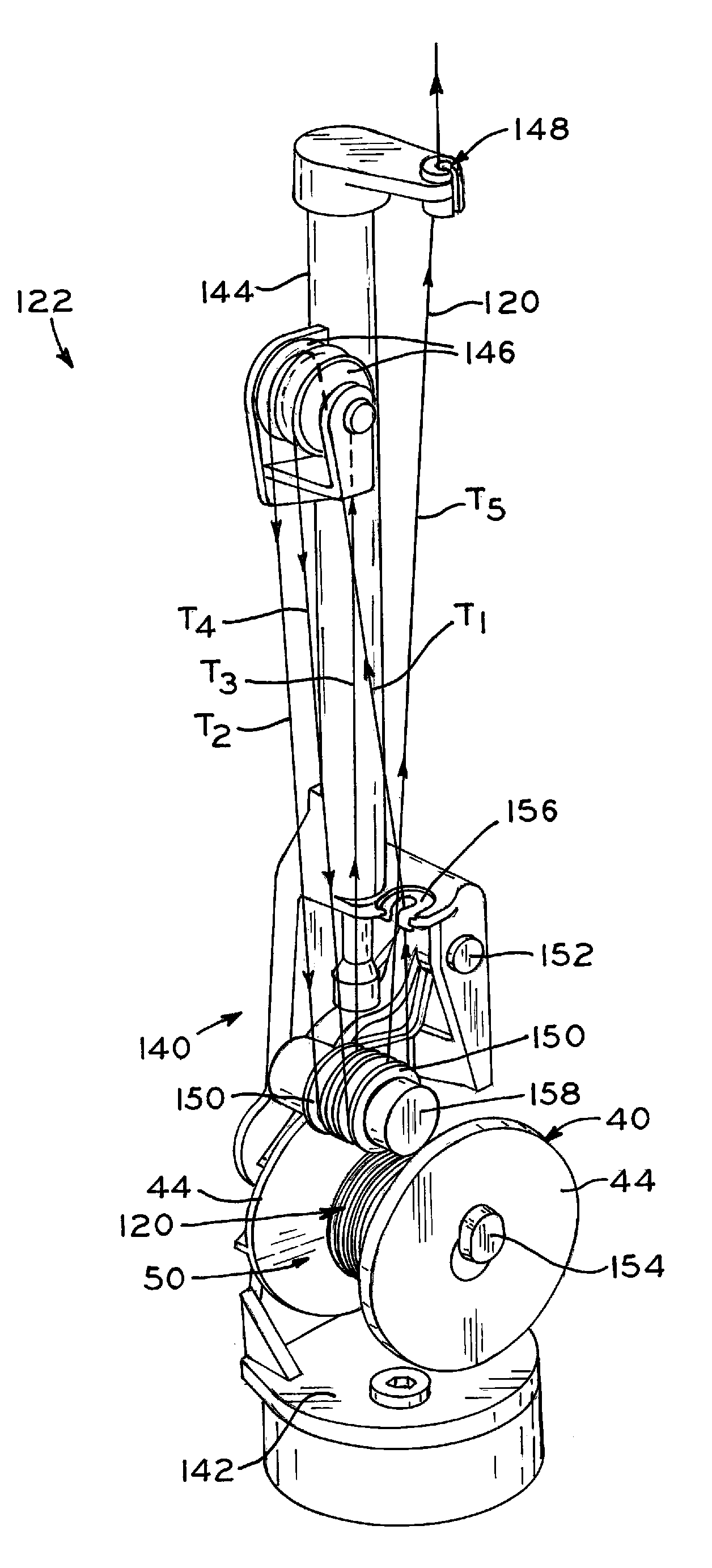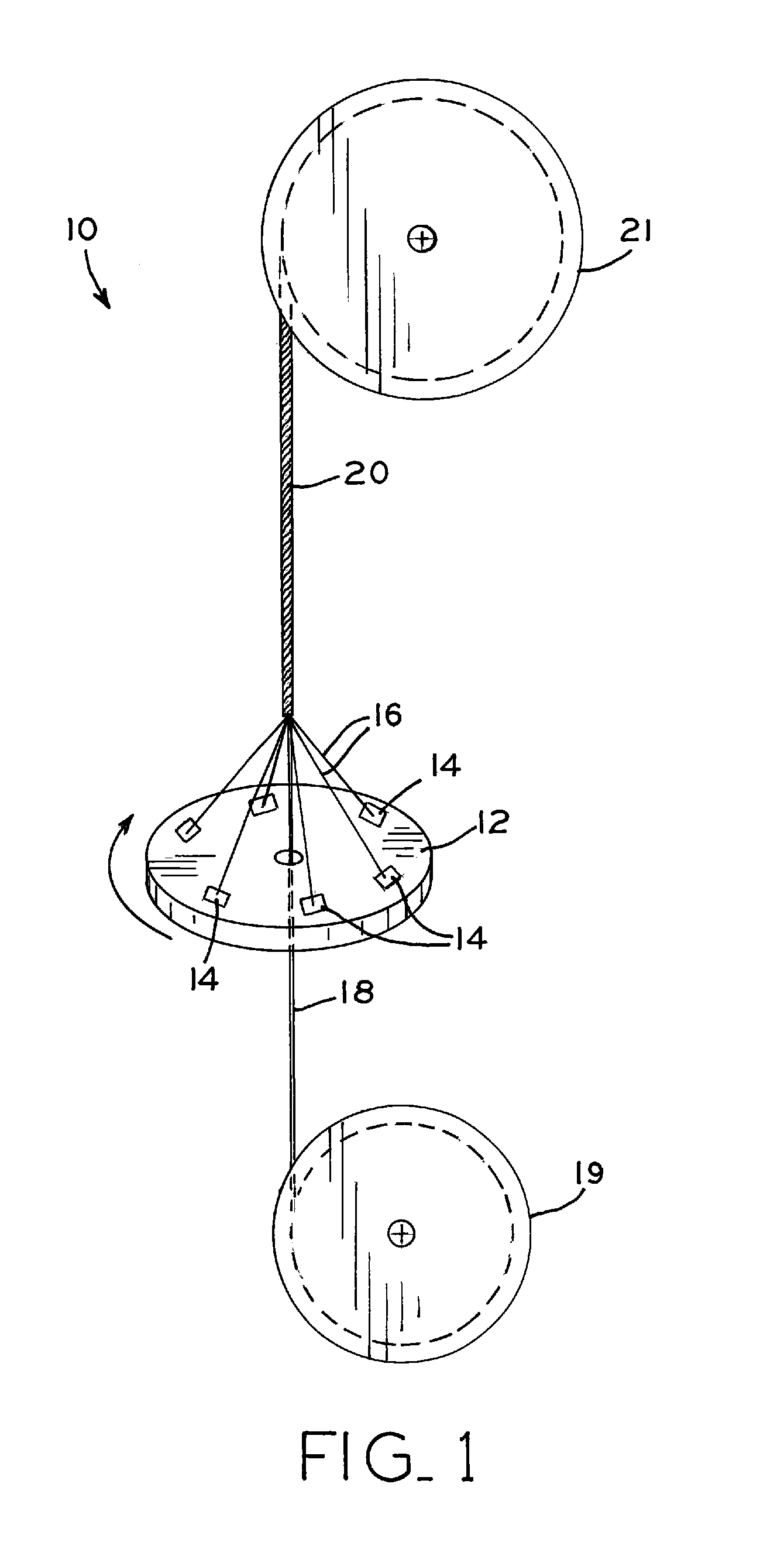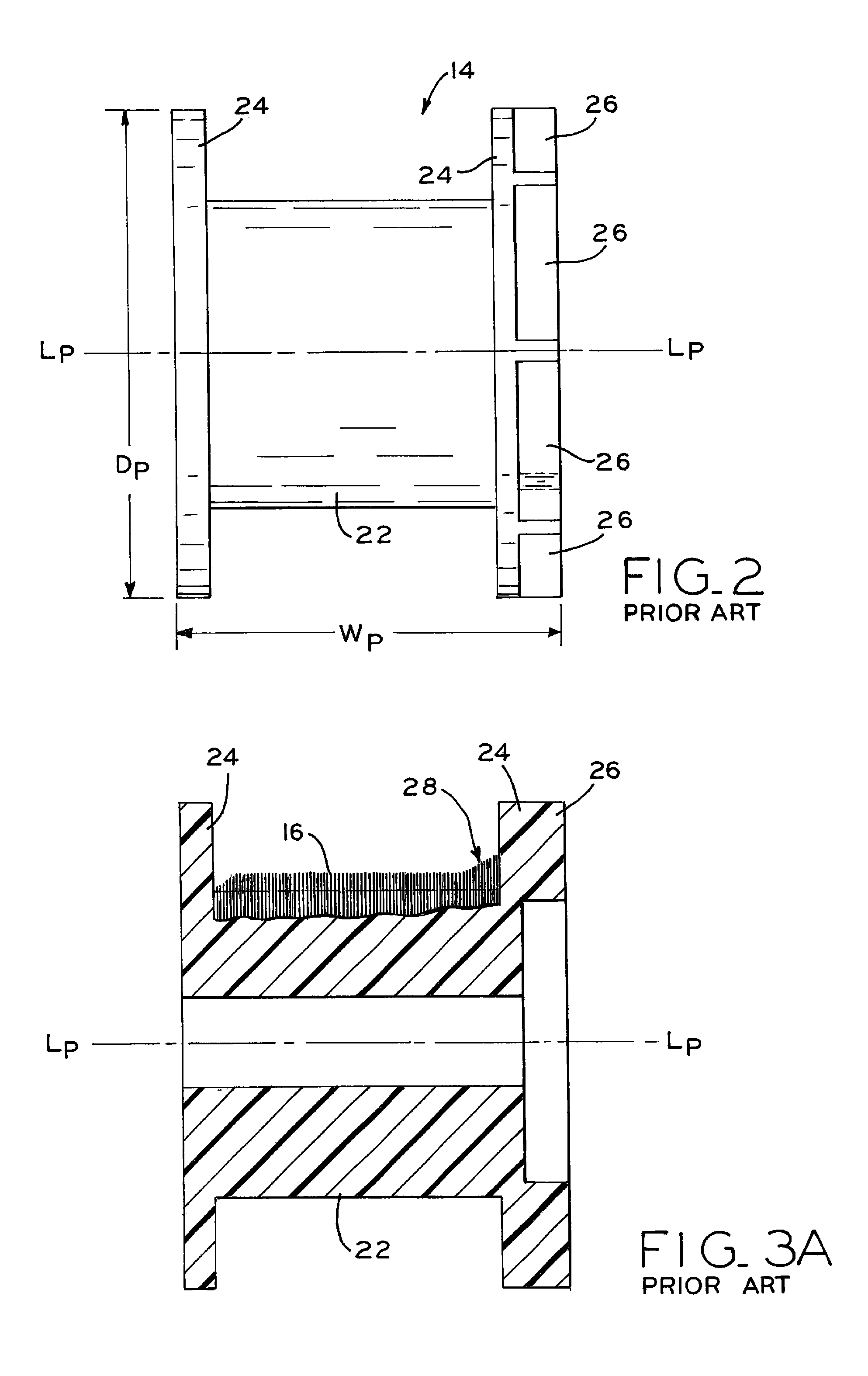Bi-tapered spool for wire braiding machines
a wire braiding machine and bobbin technology, applied in the direction of braiding, thin material processing, textiles and papermaking, etc., can solve the problems of affecting the continuity of braiding and impede production, and achieve the effect of preventing the formation, propagation and buildup of wire winding defects
- Summary
- Abstract
- Description
- Claims
- Application Information
AI Technical Summary
Benefits of technology
Problems solved by technology
Method used
Image
Examples
##ic example 1
Prophetic Example 1
[0075]The spools of FIGS. 4A-11 can used to receive wire 120 having a diameter of less than 1 mm, and in some cases less than or equal to 0.10 mm. A first end of the wire is engaged within the wire winding slot, and the wire is then continuously wound onto spool 40 in a layered, side-by-side alternating fashion as viewed from a side of spool 40, with successive layers of wire 120 overlapping one another as wire 120 is wound onto spool 40. The “bi-tapered” design of spool 40 permits the width of the layers, as viewed from the side of spool 40, to continuously increase as the wire layers are built up radially outwardly onto spool 40 along a wire winding direction transverse to the longitudinal axis L1-L1 of barrel 42 of spool 40. After a desired amount of wire 120 is wound onto spool 40, wire 120 is cut to provide a second end which is then secured to the spool, such as via a piece of tape.
[0076]When several such spools are used in a wire braiding machine, the occur...
working example 1
1. EXPERIMENTAL TECHNIQUE
[0077]In this working example, several bobbins made in accordance with the present disclosure, and having different geometrical parameters, were tested in a braiding machine made by Kórting Nachfolger Wilhelm Steeger GmbH & Co KG, illustrated as braiding machine 100 in FIGS. 12-18. As a control, known bobbins lacking a tapered profile (e.g., bobbin 14 shown in FIG. 2) were also tested under the same conditions as the present bobbins.
[0078]Standard statistical methods, including Taguchi methods for Design of Experiments, were used to evaluate the effect of seven factors on the performance of the wire braiding machine. The performance of the trials was evaluated based upon the number of wire breaks occurring during a run of the machine. A break was defined as a fracture in a single braiding wire anywhere within the payoff carrier (which causes the braiding machine to stop operation).
[0079]Percent contribution of the various factors, as such factors relate to t...
PUM
 Login to View More
Login to View More Abstract
Description
Claims
Application Information
 Login to View More
Login to View More - R&D
- Intellectual Property
- Life Sciences
- Materials
- Tech Scout
- Unparalleled Data Quality
- Higher Quality Content
- 60% Fewer Hallucinations
Browse by: Latest US Patents, China's latest patents, Technical Efficacy Thesaurus, Application Domain, Technology Topic, Popular Technical Reports.
© 2025 PatSnap. All rights reserved.Legal|Privacy policy|Modern Slavery Act Transparency Statement|Sitemap|About US| Contact US: help@patsnap.com



